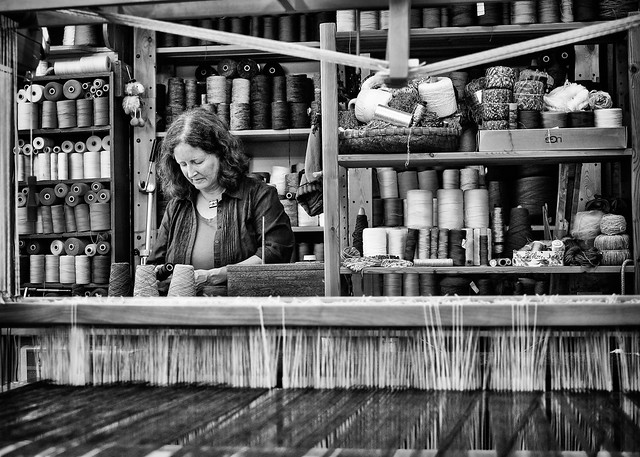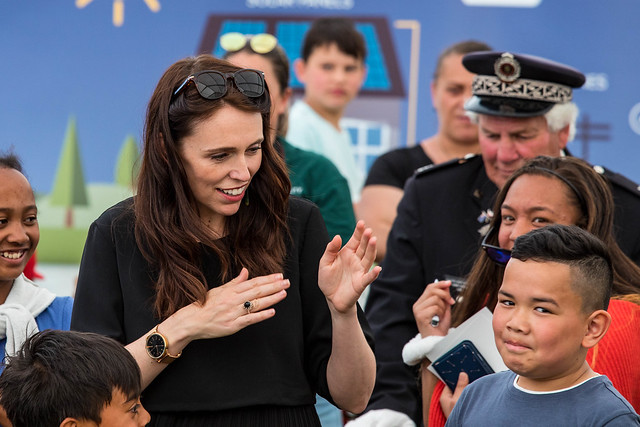Unlock the Magic in Your Story Now
Get the Free 20 questions to Ask Before Launching Your Idea workbook when you sign up for occasional updates.
Get the Free 20 questions to Ask Before Launching Your Idea workbook when you sign up for occasional updates.
Articles filed in: Storytelling
Your Company Needs A Strong Strategic Narrative
filed in Storytelling, Strategy, Success

A strategic narrative is the story that drives the choices a company makes. That narrative is the thread from which the company’s fabric—its culture and strategy are woven. Sometimes the story accidentally informs the strategy with unintended positive or sometimes, negative consequences.
It stands to reason then that we can and should intentionally leverage our narrative to achieve greater alignment and success.
The elements of a strong strategic narrative
1. Mission
Having a strong sense of purpose.
2. Values & Vision
Knowing who you are, what you stand for, who your best work is for and where you’re headed.
3. Value Creation
Understanding who your customers want to become in the presence of your product.
4. Capability
The ability to align and deliver on 1, 2 and 3.
A strong strategic narrative enables us to prioritise the opportunities, plans and behaviours that align our vision and values with our customer’s unmet needs.
Yes, we tell our story, but the story also tells us.
*Want to explore your company’s strategic narrative in more depth?
My book Story Driven will show you where to begin.
Image by Joris Louwes
Good Stories Drive Great Strategy
filed in Storytelling, Strategy

Good stories have always driven great strategy—not the other way around.
Companies forgot this in the golden age of advertising when they began asking ad agencies what they could say to sell more products, instead of first understanding what they must say to show who they were and what they stood for.
Successful brands have a great story long before they have a grand plan.
Image by Alice Donavan Rouse
The Power Of Brand Energy
filed in Storytelling, Strategy

Weekends are a quiet time for the two chocolate shops at the ‘Paris End’ of Melbourne’s Collins Street. During the working week, they are busy serving office workers who meet for coffee, buy gifts or want a little treat with their morning tea. On Sundays, the pace is much slower. A handful of tourists and window shoppers wander in and out to browse and enjoy chocolate samples.
It’s a good time to restock and get the shop looking good for the week to come. When it’s quiet, both shops are staffed by one or two people who are responsible for the entire customer experience. The energy they bring to their work on Sunday carries the brand.
The manager at the first shop enjoys the leisurely pace of Sundays. So much so that he sighs when customers ask questions or change their mind and looks for an excuse to close the cafe early so he can get away on time. The young girl at the second is excited to hand out free chocolate samples. She delights in telling customers about new flavours and marvels at the colours of the packaging and that the Easter eggs are all hand-wrapped.
Her eyes light up when she talks about the man—she describes as the company’s own Willy Wonka, who sits in a little office at the factory in Adelaide filled with ingredients and spices, inventing new flavours all day. ‘It’s not hard to be passionate about chocolate,’ she says. As she carefully wraps small packages.
The difference between the manager in the first shop and the sales assistant in the second is easy to see and hard to account, let alone hire for. That difference is purely the energy they bring to their work.
Brand energy builds brand equity. Passion isn’t something you can fake. It’s impossible to instruct. But when you have it people know. And when you experience it, you return to its source.
Image by Matthew
Bolder, Braver, Better Marketing
filed in Marketing, Storytelling

How would you find more customers if you couldn’t use traditional marketing methods? If you couldn’t do any print, radio or TV advertising or use the digital levers we’ve become so used to relying on as a way to drive business growth. Where would you start?
My guess is you’d start with people. You’d double down on serving the customers you already had and talk with, not at, people who were not customers yet. You’d get very good at explaining what you do and how it helps your customers.
You’d become an expert at looking people in the eye. You’d be bolder, braver, better. You’d make your own magic.
It’s not rocket science, yet it’s something we’ve neglected in our digital age.
This is how most businesses marketed themselves fifty years ago. By making the best possible product, for customers they knew and cared to serve. We moved away from that brave marketing model and in many ways, that shift has been to our detriment. Our focus on efficiency and scaling has taken us further away from our customers and made us less courageous marketers.
Is your marketing mindset limiting your ability to connect with and serve your customers better?
Image by Garry Knight
How Good Is Your Story?
filed in Story Skills, Storytelling

There’s a reason why this post about how to write a compelling about page is the most visited page on my website and has been since I wrote it almost eight years ago. It’s an ironic and universal truth, that the story we know best is the story we have the least confidence telling—at least when we sit down to write.
We fear saying the thing that nobody cares to listen to. But our fear of saying things that people hear and reject is even greater. So we play it safe and end up looking and sounding like everyone else. It’s not that we can’t tell better stories. It’s that we resist doing it for fear of not being good enough, or worse, right enough.
What’s the difference between a good story and a great story?
A good story tells.
A great story engages.
A good story informs.
A great story moves people.
A good story chronicles events.
A great story invests people in the outcome.
A good story changes how we think.
A great story changes how we feel and what we do.
You already have a good story to tell. It’s how you tell it that makes it great.
Image by x1klima
On Culture
filed in Storytelling, Strategy

Culture is how we act, based on what we know about who we are.
It isn’t about fitting in, it’s about understanding where we belong and why.
Culture is a reminder that if we believe this, then we do or don’t do, that.
It’s about saying this is who we are, then living up to that ideal.
The leader’s job isn’t to tell us what to do.
It’s to remind us who we are, so we can live that story.
Image by Michael Dawes
Fabled Or Found?
filed in Marketing, Storytelling

Every week, my favourite bookstore restocks the shelves at the front of the store with new releases. And every time I go there, I think the same thing. What are the chances of any book—no matter how good, being found here?
The truth is, the books that sell are the ones that people come into the store knowing they are going to buy. The book that’s been recommended. The thing they’ve already heard about.
Breakthrough ideas and bestselling products are rarely stumbled upon.
They are recommended—passed from person-to-person.
Our job isn’t to be found. It’s to make something worth talking about.
We do that by understanding who we do our best work for and why—then creating something those people love.
Image by Germán Poo-Caamaño
Don’t Manipulate Me, Move Me
filed in Marketing, Storytelling, Strategy

There’s a difference between a good story and a great story.
A good story gets our attention. A great story changes us.
Successful marketing campaigns and brand stories don’t convince us.
They move us.
A good leader gets our vote, and sometimes, our respect.
A great leader gains our loyalty, and often, our love.
We don’t have to be smart enough to manipulate people to act.
We have to be sincere enough to move them to act.
Image by Nevada Halbert
Without You
filed in Story Skills, Storytelling

If I were to ask you to explain your company’s ‘value proposition’ you’d probably hesitate. But if I asked you what your customer would miss if your work didn’t exist, you’d likely have some thoughtful answers about why she needs what you make, serve or sell. Sometimes the language and frames we use stop us expressing ourselves clearly.
One way to begin describing the value you create is to talk about what can’t happen without you.
Without us fewer people can/are/feel/have/do/become [———————].
We tell better stories when we understand how customers’ lives change in the presence of our product.
Image by Garry Knight
The Two Rules Of Good Marketing
filed in Marketing, Story Skills, Storytelling

The best marketing does two things:
1. It empowers people to make decisions now that they won’t regret later.
2. It helps people to do the things they want to do.
If you’re helping the people you serve to do both of these things, you can proudly say you’re a good marketer.
Image by Eric Shoniya